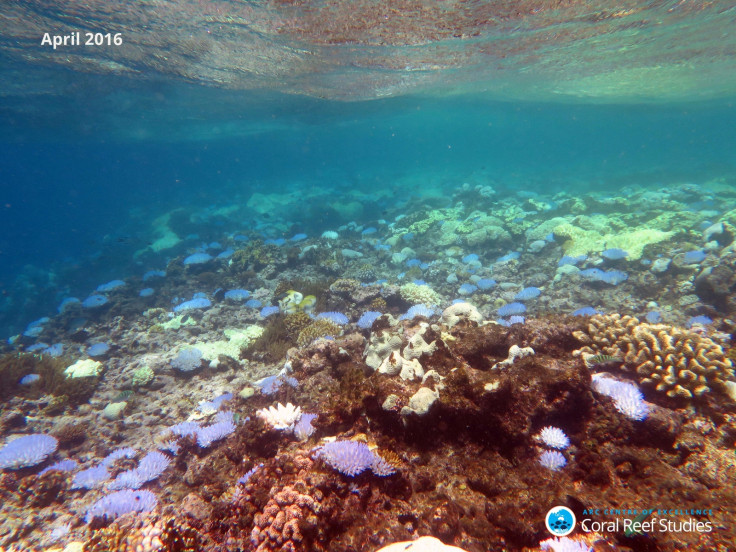How breeding rare giant sea snails could save the Great Barrier Reef
The reef faces a major threat in addition to those posed by global warming and rising sea temperatures.
In an age of global warming, the widely held view is that the biggest danger facing the Great Barrier Reef (GBR) is coral bleaching caused by rising sea temperatures. 2017 saw an unprecedented second straight year of bleaching – which over time can kill coral – with the outlook for the future only set to worsen.
According to the Australian Institute of Marine Science (AIMS), the reef – which is the largest living structure in the world – has lost around half of its coral cover in the last 27 years. Surprisingly, however, only 10% of this loss has been due to bleaching.
While the dangers of coral bleaching should not be discounted, an altogether more unexpected threat has contributed far more to coral loss over this period – namely, starfish. Specifically, the Crown-of-Thorns Starfish which eats coral and is considered one of the greatest threats to the GBR. AIMS estimates that it accounts for a whopping 42% of the lost coral.
To combat the threat, the Australian government has announced funding for a new plan that could rescue the reef. The hope is that if the starfish can be removed, the coral will be given more of an opportunity to adapt to the challenge of rising ocean temperatures and acidification in what is already a difficult situation.
If the threat of the starfish was surprising, then the government's solution is perhaps even more unexpected. They plan to create a breeding program for a rare type of giant sea snail called the Pacific triton, which has a fondness for eating Crown-of-Thorns Starfish.
Tritons are one of the adult Crown-of-Thorns Starfish's few predators as they seem to be unaffected by the hundreds of sharp, toxic spines that inspire the species' name.
The snails have been hunted almost to extinction for their shells and meat, so the government funding will go towards increasing their numbers on the GBR.
However, even this may not be sufficient. The tritons only eat a few snails per week and the starfish number in the many millions, so breeding enough to simply eat all the starfish would be a huge challenge.

Resultantly, researchers from AIMS have been focusing on another aspect of the triton's biology that could be harnessed to reduce the starfish population. They are investigating how the snail's scent could be used to scare off and disperse the starfish.
"The chemical cues from the triton snail are highly influential when it comes to Crown-of-Thorns Starfish behaviour," said Mike Hall, a research scientist with AIMS. "We only need to introduce water that a triton has been sitting in to disperse a group of the starfish – they don't even need to see it."
This ability could help to reduce the starfish population on the reef, without needing to breed enough snails to physically eat them.
"Reefs could be seeded with tritons – not to eat them, but to repel them. Alternatively, with time and effort, we could identify, isolate, harness and deploy the chemicals responsible for the Crown-of-Thorns-Starfish behaviour, without using the snail itself."
If the snails or their scent could be used to disperse large gatherings of the starfish when they spawn, the strategy could be even more effective. Crown-of-Thorns starfish have an incredible capacity to reproduce. A single female can spawn 150 million eggs in a single sitting.
"When males and females gather in large aggregations, essentially clumping together almost on top of one another, fertilisation success is incredibly high. If these chemicals can keep the starfish moving around and prevent them from forming these successful breeding aggregations, we could potentially disrupt this outbreak cycle."
Normally, the strategy for removing the starfish has been to use chemicals such as bile salts, however these are expensive and can harm other marine organisms.
© Copyright IBTimes 2025. All rights reserved.





















